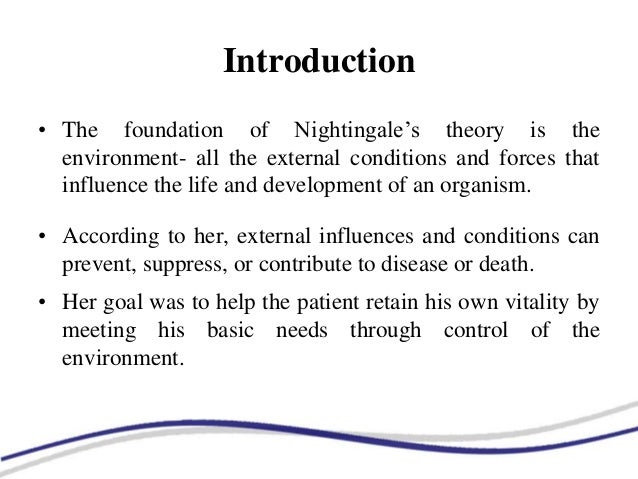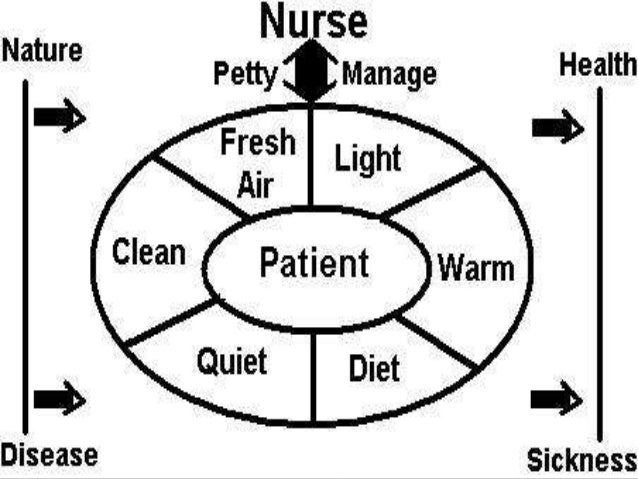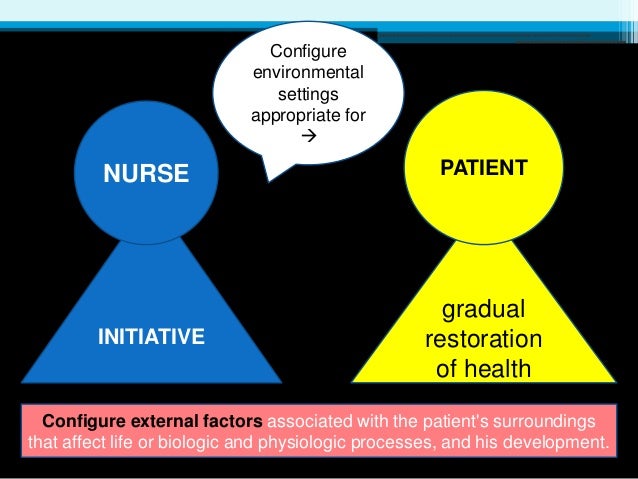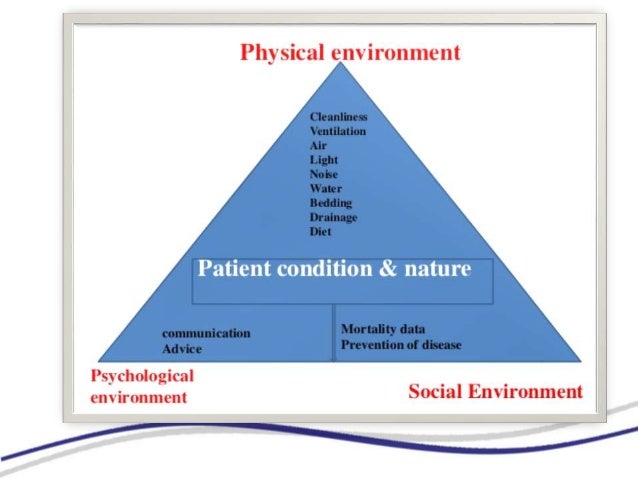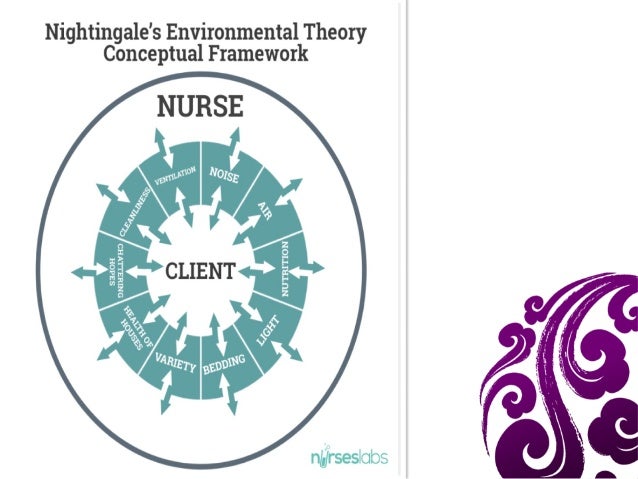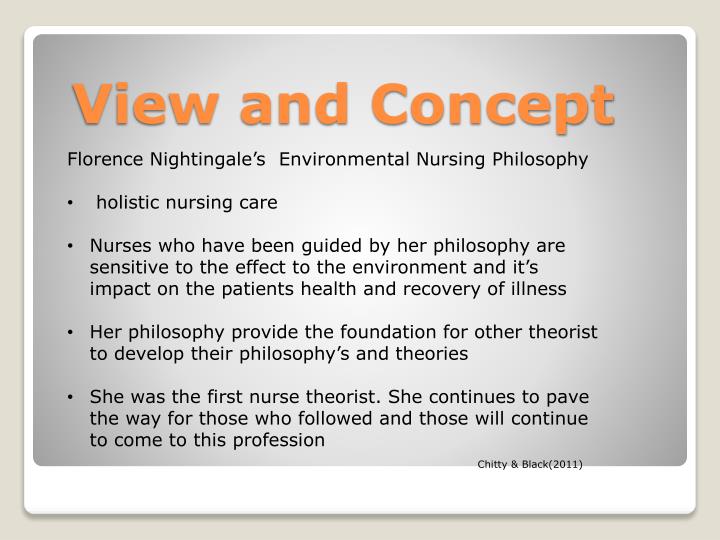Florence Nightingale Theory Of Environment

Nightingales theory addresses disease on a literal level explaining it as the absence of comfort.
Florence nightingale theory of environment. Her model can be applied in most complex hospital intensive care environment the home a work site or the community at large. In this way the best care possible could be provided. The environmental theory of nursing is a patient care theory. Florence nightingale is considered the first nursing theorist.
Florence nightingales theory of environment a discussion in nursing theory must be preceded by a general definition of theory because in order to understand nursing theory one must have a general knowledge of what theory is. The environment paradigm in nightingales model is understandably the most important aspect. The theoretic approach in providing care for an inmate with human immunodeficiency virus is viewed through the lens of florence nightingales environmental theory. By individualizing each environment healing could be created and deeper relationships between the patient and nurse could form.
Theory of florence nightingale date of last revision january 31 2012 the goal of nursing is to put the patient in the best condition for nature to act upon him. Florence nightingale 18201910 considered the founder of educated and scientific nursing and widely known as the lady with the lamp wrote the first nursing notes that became the basis of nursing practice and research. Her observations taught her that unsanitary environments contribute greatly to ill health and that the environment can be altered in order to improve conditions for a patient and allow healing to occur. Nightingale presents as the meaning of the environmental theory the fact the cause of the disease andor non rehabilitation of the patient is closely related to the environment in which the patient is inserted which is most often unhealthy.
Her model can be applied in most complex hospital intensive care environment the home a work site or the community at large. It focuses in the alteration of the patients environment in order to affect change in his or her health. She believed the environment had a strong influence on patient outcomes and many elements of her environmental theory are still practiced today.

